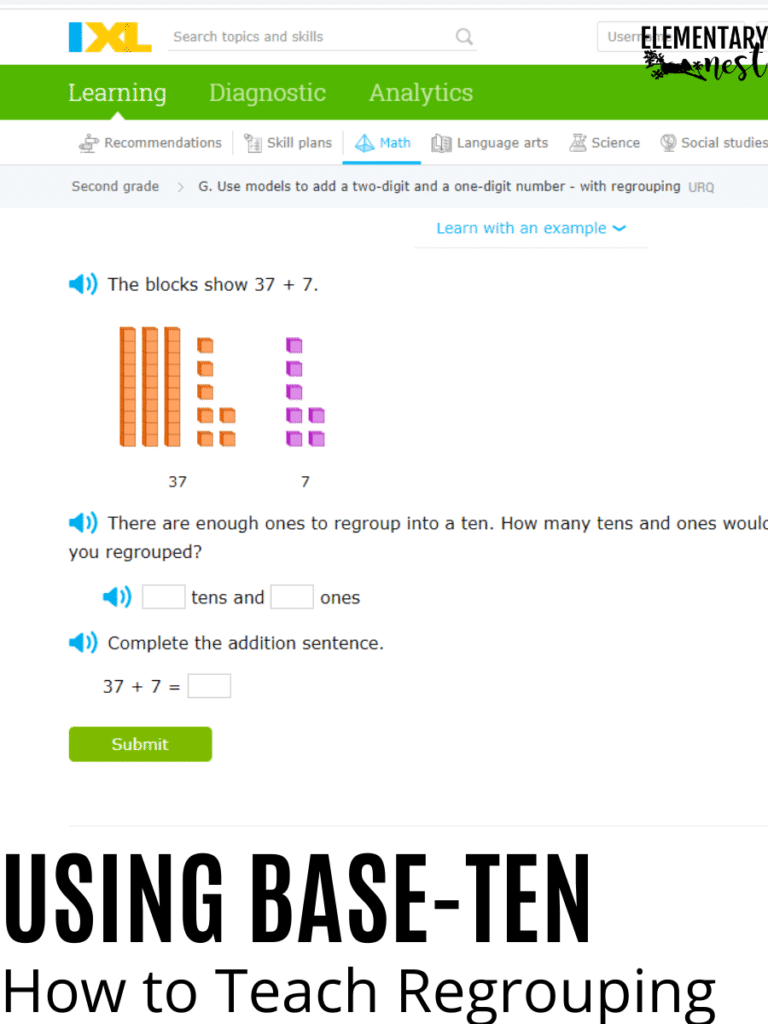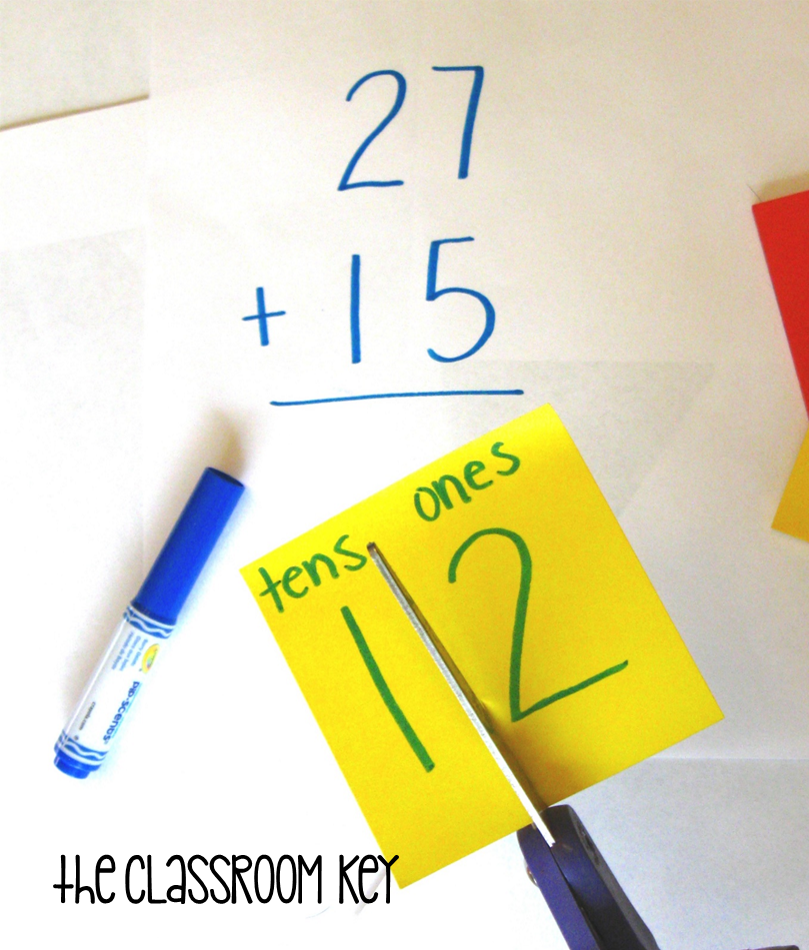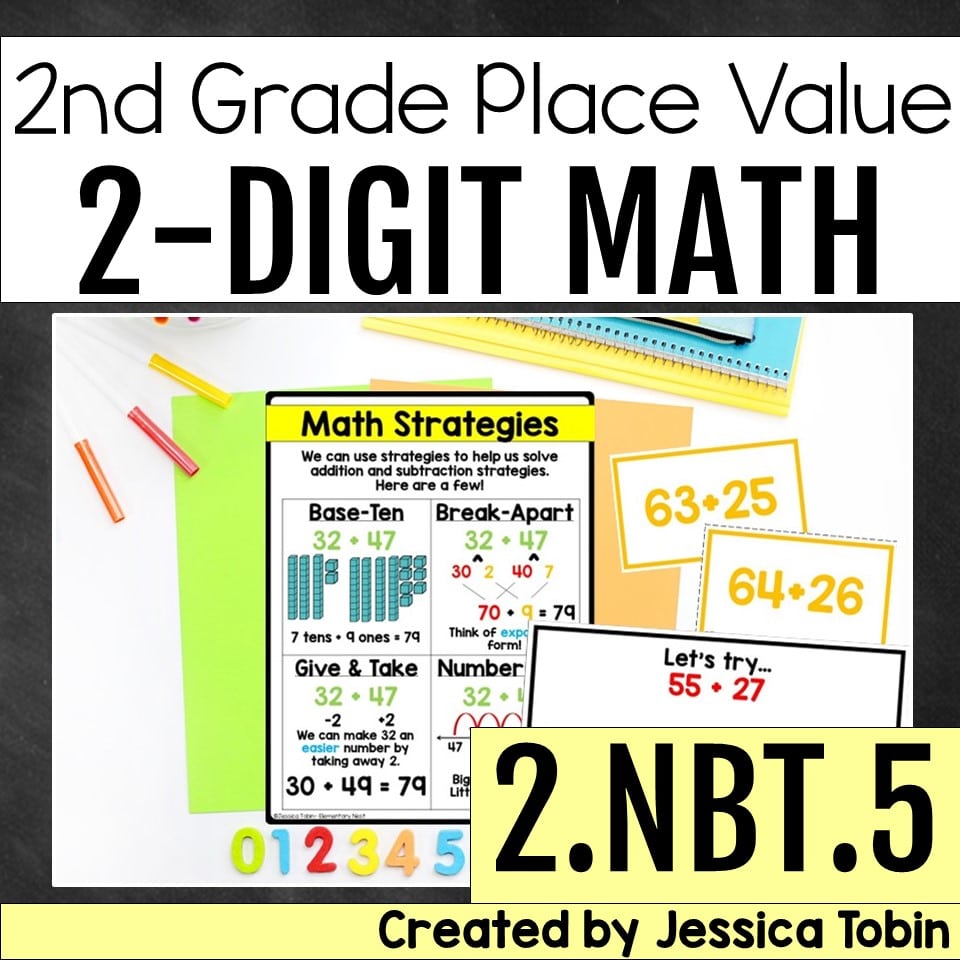
This blog post is full of tips for teaching your 2nd grade students about regrouping strategies. These strategies will help students fluently add and subtract using place value and properties of operations. In 2nd grade, students will be introduced to base-ten blocks, expanded notation, and the standard algorithm as strategies for regrouping.
2nd Grade Standards:
NBT.5: Fluently add and subtract within 100 using strategies based on place value, properties of operations, and/or the relationship between addition and subtraction.
NBT.6: Add up to four two-digit numbers using strategies based on place value and properties of operations.
NBT.7: Add and subtract within 1000, using concrete models or drawings and strategies based on place value, properties of operations, and/or the relationship between addition and subtraction; relate the strategy to a written method. Understand that in adding or subtracting three-digit numbers, one adds or subtracts hundreds and hundreds, tens and tens, ones and ones; and sometimes it is necessary to compose or decompose tens or hundreds.
Introduce Regrouping with Anchor Charts

Beginning your common core math unit with anchor charts and whole group instruction is highly effective. This helps break down the purpose of regrouping and gives a step-by-step visual of how it is used to solve addition and subtraction problems. This anchor chart is very helpful with the use of the base-ten blocks. These blocks are an excellent tool to have in your classroom. The students can walk through this example and a few others with their own physical base-ten blocks. This anchor chart can go onto the math wall to help the students throughout the unit.
[Image shown- resource from my 2.NBT.5 Bonus set- link below]
Videos to Help Introduce Regrouping

(Sources: Addition Regrouping & Subtraction Regrouping– BrainPop)
Secondly, using technology to reinforce this concept is effective and fun for the students. These BrainPop Jr. videos break down the steps of regrouping in several ways. In turn, this ensures that each student connects with the regrouping process. Students may take notes while watching the videos. Upon completion of the videos, students can practice with example problems to further their understanding.
Base-Ten Blocks to Help Visualize Regrouping

After that, hands-on regrouping practice using base-ten blocks and unifex cubes is beneficial. These tools are perfect for use in “trading” games. Students love playing math games. Math games keep them engaged in the learning. Oftentimes, they forget they are doing math! Trading games encourage students to practice trading out ones and tens to make as many tens as possible. This is great place value practice and preparation for regrouping.

The next regrouping strategy is using base-ten blocks and place value mats to represent the act of regrouping. The students will be able to model addition and subtraction problems on their mats. Next, they can begin trading ones and tens to solve the problem. The act of physically regrouping and seeing the difference between ones and tens makes this skill more concrete for the students.
[Image shown- resource from my 2.NBT.5 Bonus set- link below]

(Source: IXL Model Game)
This free math game from IXL can be used to help your students practice their regrouping strategies using base-ten block models. The models offer a solid visual for the students as they work through and solve the problems. IXL is an excellent app for re-teaching, practicing, and extending math skills.
Regrouping with the Expanded Notation

The next regrouping strategy is expanded notation. Your students have learned about expanded notation in previous lessons. Now is a great time to revisit that skill and practice writing numbers in expanded form. After reviewing, the students are ready to learn how to apply expanded notation to addition and subtraction. This skill helps students quickly combine the tens and ones places to add or subtract. If they are subtracting and regrouping is needed, this expanded form makes it easier for students to understand. The concept of borrowing from the tens place is visualized with this model.
[Image shown- resource from my 2.NBT.5 set- link below]
Using the Standard Algorithm for Regrouping

The next regrouping strategy is using the standard algorithm. Anchor charts are an effective, kid-friendly way to introduce the steps of regrouping. They show the students when regrouping is needed. Hang these anchor charts around the classroom for student reference. It is a good idea for the students to solve example problems using the steps shown on the anchor chart.
[Image shown- resource from my 2.NBT.5 Bonus set- link below]

(Source: The Classroom Key)
Sticky Note Tip
One of my favorite regrouping strategies is the “Sticky Note” strategy. This simple, yet effective strategy will help students understand when they need to regroup during addition problems. In addition, it gives them more practice with place value. First, they will add the ones column and write that number on the sticky note. If it is 10 or greater, they will cut the sticky note, leaving the ones half under the ones column and place the tens half above the tens column. Finally, they will add up all of the numbers in the tens column and arrive at their answer.

After the students have become more comfortable with the standard algorithm, it is important to give them problems presented both horizontally and vertically. This ensures that they understand how to apply the standard algorithm regrouping strategy to both problem formats. T-charts are helpful for students too. These charts allow the students to split up the different place values and differentiate the tens and ones. T-charts are especially helpful when solving horizontal problems.
[Image shown- resource from my 2.NBT.5 Bonus set- link below]

Teaching students how to check their work is an important skill. Furthermore, it is good practice to have students use two different strategies to check their work, such as the standard algorithm and base-ten. This allows them to connect each strategy to the overall skill of regrouping. In addition, they get more practice with the strategies as they check their work.
[Image shown- resource from my 2.NBT.5 Bonus set- link below]
Suggested Regrouping Materials for Practice
I have two options for regrouping activities: full units with lesson plans and supplemental activities to fit into your own lessons. Check them out below.
Here are two full units with guided lesson plans, hands-on centers, differentiated small group activities, and more.


And here are extra supplemental resources to fit into your lessons as you see fit.



- 2NBT Worksheets– Covers ALL NBT skills, but includes a few regrouping practice pages
- 2-Digit and 3-Digit Centers
Want more math teaching ideas?


















